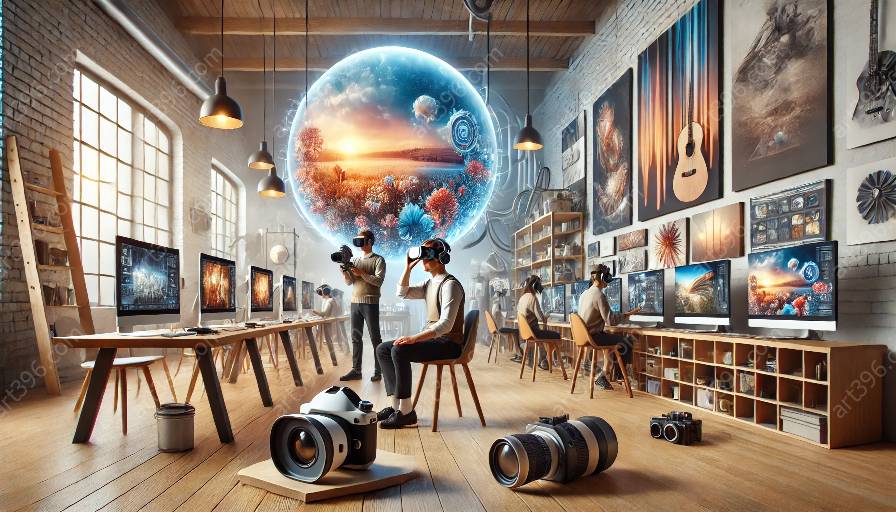Virtual reality (VR) has emerged as a powerful tool in the world of artistic expression, particularly in photographic and digital arts. As artists and creatives explore the possibilities of VR as a medium, it is essential to consider the ethical implications of these advancements. This topic cluster aims to delve into the ethical considerations of using virtual reality in the context of photography and digital arts, exploring its impact on artists and viewers.
Understanding Virtual Reality Art
Before delving into the ethical considerations, it is important to understand the unique nature of virtual reality art. VR art allows artists to immerse viewers in a completely new environment, providing an interactive and immersive experience that goes beyond traditional artistic mediums. This technology enables artists to create dynamic, multi-sensory experiences that challenge the boundaries of traditional art forms.
Empathy and Emotional Impact
One of the key ethical considerations when using VR in photographic and digital arts is the potential for heightened emotional impact on the audience. VR has the ability to induce strong emotional responses and can evoke empathy in a powerful and immediate way. This raises concerns about the ethical responsibility of artists in creating VR experiences that are emotionally charged or potentially distressing for viewers.
Representation and Authenticity
Another important aspect of ethical considerations in VR art is the issue of representation and authenticity. As artists create immersive digital environments and experiences, they must be mindful of the potential for misrepresentation and the impact on marginalized communities. It is essential to consider the ethical implications of representing real-world spaces, cultures, and identities in a virtual realm, and to ensure that the portrayal is respectful and authentic.
Ownership and Consent
When incorporating VR into photographic and digital arts, questions of ownership and consent come to the forefront. Artists must consider the ethical implications of using real-world imagery and content in their VR creations. Obtaining consent for the use of recognizable individuals or locations in virtual environments is crucial to respect the rights and privacy of those depicted.
Impact on Artists
From the perspective of the artists themselves, the ethical considerations of using VR as a medium in photography and digital arts also encompass issues such as intellectual property rights, fair compensation, and the potential for exploitation of their work in the digital realm. With the unique and rapidly evolving nature of VR, artists face new challenges in protecting their creations and maintaining control over their artistic output.
Viewer Experience and Well-being
In addition to considering the impact on artists, it is vital to address the ethical impact on the audience. Virtual reality experiences have the potential to deeply influence the perceptions and emotions of viewers, and artists must consider the psychological well-being and potential harm that could arise from immersive VR content. Ethical artists strive to create experiences that are thought-provoking and emotionally engaging, while also ensuring the well-being of their audience.
Conclusion
As virtual reality continues to expand its presence in the world of photography and digital arts, ethical considerations play a crucial role in guiding the responsible use of this powerful medium. By exploring the ethical implications of VR in artistic expression, artists can create impactful and meaningful experiences that respect both the creators and the audience.



















































